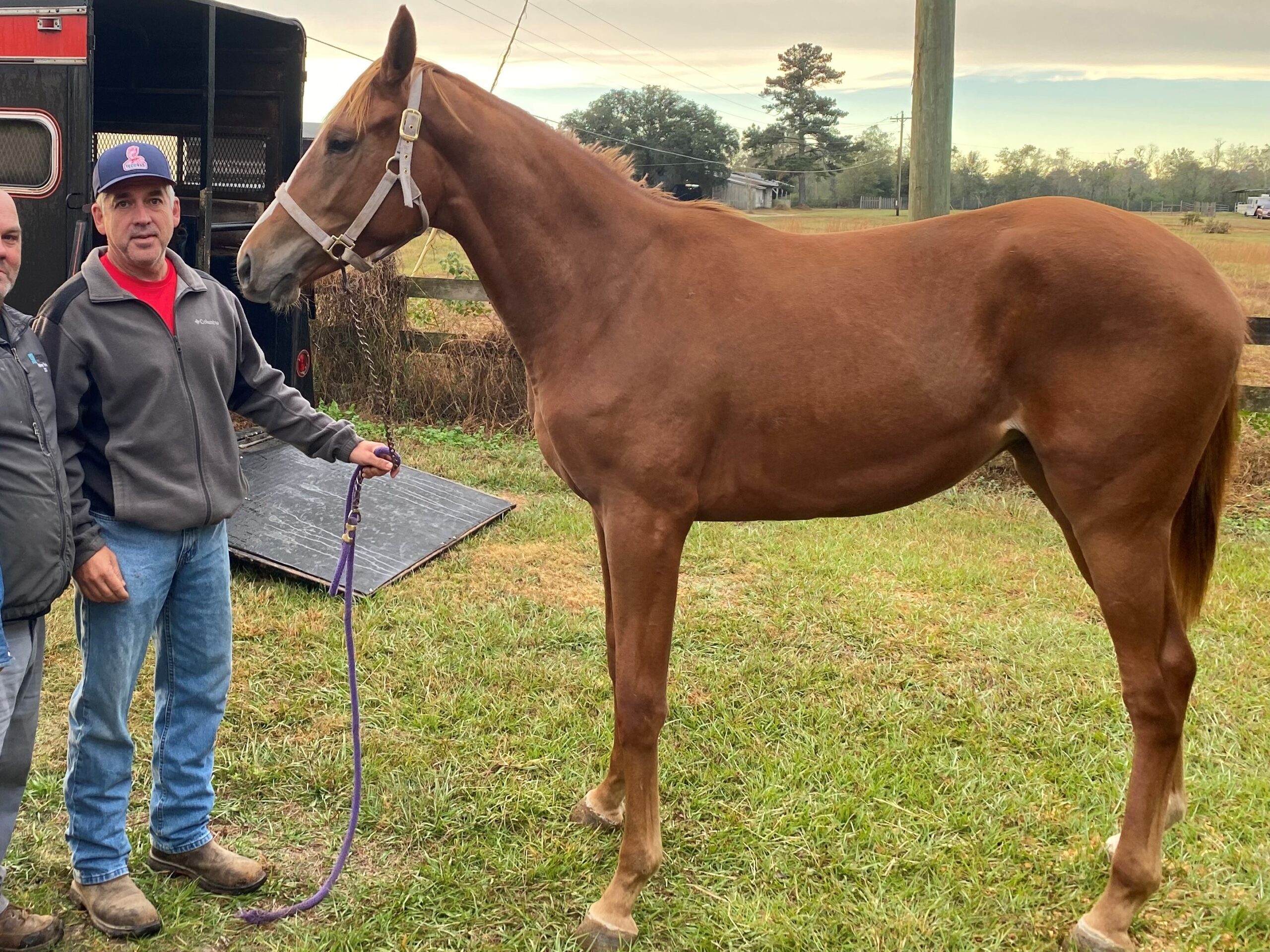Last updated: March 10, 2025
Any links on this page that lead to products on Amazon are affiliate links and I earn a commission if you make a purchase. Thanks in advance – I really appreciate it!
Internal parasites are a persistent threat to your horse’s health, impacting performance, well-being, and longevity. With proactive strategies, you can minimize their impact and keep your horses thriving. This guide covers everything you need to know about internal parasites in horses, including their lifecycles, signs of infestation, targeted treatments, and proven prevention strategies.

Understanding Internal Parasite Lifecycles in Horse
Effectively managing parasites begins with understanding how they operate. Here’s a breakdown of the most common types and their effects:
- Strongyles (Bloodworms):
Large strongyles, according to Penn State Extension, are particularly harmful because their larvae migrate through blood vessels, potentially causing life-threatening blockages and organ damage. Eggs are shed in manure, develop into larvae in the environment, and are ingested by horses during grazing. - Ascarids (Roundworms):
These primarily affect foals and young horses. The larvae migrate through the lungs and liver before settling in the intestines, often causing stunted growth and respiratory issues. Regular monitoring is critical for young horses. - Tapeworms:
Tapeworms use oribatid mites as intermediate hosts. Horses ingest the mites while grazing, and the tapeworms attach to the intestinal lining, where they can cause colic and blockages. The National Institute of Health highlights that these parasites are most active in late fall, making timely treatment crucial. - Pinworms:
These lay eggs around the anus, causing irritation and excessive tail rubbing. While less harmful, they can still affect your horse’s comfort and coat condition. - Bots:
Botflies lay eggs on the horse’s coat, which are ingested when the horse grooms itself. The larvae then migrate to the stomach, causing irritation and sometimes ulcers.
Pro Tip: Rotate pastures every 4–6 weeks and remove manure weekly. Use a compost thermometer to ensure manure piles reach at least 131°F to kill parasite eggs effectively.
Signs of Internal Parasites in Horses to Watch For

Early detection of parasites is vital. Look for these common signs:
- Weight loss despite proper feeding
- A dull coat and reduced energy
- Recurring colic episodes
- Pot-bellied appearance, especially in foals
- Tail rubbing and irritation
Last summer, I noticed one of my geldings losing weight and his coat dull. Initially, I suspected a dietary issue, but a fecal egg count (FEC) revealed a high strongyle load. The challenge was coordinating FEC testing during a busy season. After talking with my vet, I implemented a targeted deworming plan and fine-tuned my pasture rotation schedule. Within weeks, his coat regained its shine, and he returned to peak condition.
Effective Treatments for Internal Parasites in Horses
Targeted treatments ensure efficacy while reducing the risk of resistance.
Common Dewormers
- Ivermectin and Moxidectin:
Effective against strongyles, bots, and ascarids. I once used Moxidectin on a horse with a high bot burden after confirming with an FEC. Within a month, his symptoms improved dramatically. - Fenbendazole and Pyrantel:
These are ideal for targeting roundworms and pinworms, especially in younger horses. - Praziquantel:
If your horse has tapeworms, Praziquantel is a reliable go-to solution that I’ve seen work wonders in late fall treatments.
Pro Tip: Consult your veterinarian for precise dosages based on your horse’s weight and FEC results. Administer tapeworm and bot treatments in late fall after the first frost to align with their lifecycle.
Targeted Deworming
Tailored deworming is based on FEC results, focusing treatments on high shedders while minimizing medication for low shedders. This approach slows resistance and reduces unnecessary exposure to dewormers.
- Collecting FEC Samples:
Use gloves and a clean container to collect fresh manure, ideally within 12 hours of defecation. Store the sample in a cool place if immediate testing isn’t possible. Your vet will analyze it to determine the type and number of parasite eggs present. - Implementation Tip:
Initially, coordinating FEC testing with treatment schedules felt overwhelming. Setting up a shared calendar with my vet streamlined the process and ensured no steps were missed.
Pro Tip: Rotate dewormers annually to maintain effectiveness against a range of parasites. Refer to the AAEP Parasite Control Guidelines for more details.
Long-Term Parasite Control in Horses
Prevention is the cornerstone of long-term parasite control in horses. Maintaining a clean environment, monitoring parasite loads, and adopting strategic practices can significantly reduce reliance on chemical treatments. Consistent care ensures your horses stay healthy and thrive. Here are practical steps to include in your routine.

Manure Management
Removing manure weekly is an effective way to reduce parasite exposure in pastures. For those who compost, follow these best practices:
- Heat Matters: Ensure compost piles reach at least 131°F to kill parasite eggs and larvae.
- Verify Temperatures: Use a compost thermometer to monitor heat levels.
- Reuse Safely: Properly composted manure can be safely reused in pastures without reintroducing parasites.
Pro Tip: Group composting tasks into your weekly routine to stay consistent and reduce workload over time.
Pasture Rotation
Rotating pastures every 4–6 weeks reduces your horse’s exposure to parasite larvae while allowing grazing areas to recover. Here’s how to make the most of it:
- Minimize Overgrazing: Avoid forcing horses to graze closer to potentially contaminated ground.
- Maximize Sunlight Exposure: Allow empty pastures to benefit from natural sunlight, which helps kill parasite larvae.
FEC Testing
Regular fecal egg counts (every 3–6 months) are a cornerstone of targeted parasite management. Use these steps to make FEC testing part of your routine:
- Why It’s Important: Testing identifies parasite loads, tailoring deworming plans to individual horses.
- How to Collect Samples: Gather fresh manure within 12 hours, store it in a cool place, and have your veterinarian analyze it.
- Avoid Resistance: Regular testing reduces the overuse of dewormers, helping prevent resistance.
Pro Tip: Record FEC results and deworming schedules in a log or use our Free Parasite Management Checklist for easy tracking.
Botfly Egg Removal
During peak seasons, adding botfly egg removal to your grooming routine prevents infestations and keeps your horses comfortable. Here’s how:
- Use the Right Tools: A bot knife or similar tool ensures effective removal.
- Stay Consistent: Incorporate this into daily grooming to reduce the chance of eggs hatching.
Last year, I faced a particularly heavy botfly season and began daily egg removal during grooming. Initially tedious, it became second nature and significantly reduced infestations, strengthening the bond with my horses.
Feeding Practices
Feeding practices go beyond cleanliness—they’re an essential part of parasite control. Optimize your routine with these strategies:
- Elevated Feeders: Prevent parasite ingestion by using elevated feeders, particularly in high-grazing areas.
- Hay Nets: Using hay nets keeps forage off the ground, reducing contamination. Slow-feed hay nets mimic natural grazing behaviors, keeping your horses engaged longer.
- Clean Equipment Weekly: Wash feeders and water troughs regularly with warm water and dish soap. For deeper cleaning, use food-safe disinfectants to eliminate bacteria and parasite eggs.
Pro Tip: Group horses with similar parasite burdens together to minimize reinfection risks. Pair this strategy with regular FEC testing for optimal results.
Table for Long-Term Parasite Control
| Practice | Frequency | Key Benefits |
|---|---|---|
| Manure Management | Weekly | Reduces larvae exposure; makes compost safe for reuse. |
| Pasture Rotation | Every 4–6 weeks | Limits grazing on contaminated areas; promotes pasture recovery. |
| FEC Testing | Every 3–6 months | Targets treatments effectively; prevents resistance. |
| Botfly Egg Removal | Daily (peak seasons) | Prevents infestations; improves horse comfort and health. |
| Feeding Practices | Daily/Weekly | Limits contamination via clean equipment and strategic feeding. |

FAQs About Internal Parasites in Horses
What are signs that deworming isn’t working?
Persistent weight loss, a dull coat, or recurring colic despite treatment could indicate resistance. Conduct a follow-up FEC two weeks after treatment to verify effectiveness. Learn about feeding horses to keep their coat shiny.
How can I safely compost manure to kill parasites?
Ensure compost piles reach 131°F or higher for several days. Use a thermometer and turn the pile regularly to maintain consistent heat distribution.
What are common mistakes horse owners make in parasite management?
Over-deworming, skipping FEC testing, and neglecting manure management are common errors that can lead to resistance and higher parasite loads.
How do weather conditions affect parasite loads?
Warm, moist environments encourage larval development, increasing risks. Conversely, extreme cold or drought reduces survival rates of larvae.
How can I introduce preventive measures for foals?
Start with FEC testing at 2–3 months old. Deworm foals more frequently, as recommended by your vet, since they are highly susceptible to roundworms.

Conclusion: Managing Internal Parasites in Horses
Managing internal parasites in horses is more than just a routine—it’s a vital part of ensuring their overall health and happiness. By understanding parasite lifecycles, spotting the early warning signs, and adopting targeted treatments and prevention strategies, you can keep your horses thriving.
Are you ready to simplify your horse’s care and take control of parasites? Download our Free Parasite Management Checklist, featuring detailed schedules, actionable tips, and space to track your horses’ deworming history. This tool makes it easy to stay on top of your horse’s health and keep parasites under control.

About the Author: Miles Henry
Lifelong Horseman | Racehorse Owner | Published Author
Miles Henry brings over 25 years of hands-on experience training and owning Thoroughbred racehorses. Raised with Quarter Horses and Appaloosas, he’s spent a lifetime learning from horses—on the track, in the barn, and in the field. Today, he runs a small but successful racing stable in Louisiana and shares real-world insights on HorseRacingSense.com, helping horse owners, fans, and bettors navigate the sport with confidence.
📚 Books: View Miles’s books on Amazon »
🎧 Podcast Guest: Animal Tales Ep. 32 |
YouTube Interview
📩 Newsletter: Sign up for racing tips and horse care advice »
🔗 Follow Miles:
Twitter |
Facebook |
YouTube

